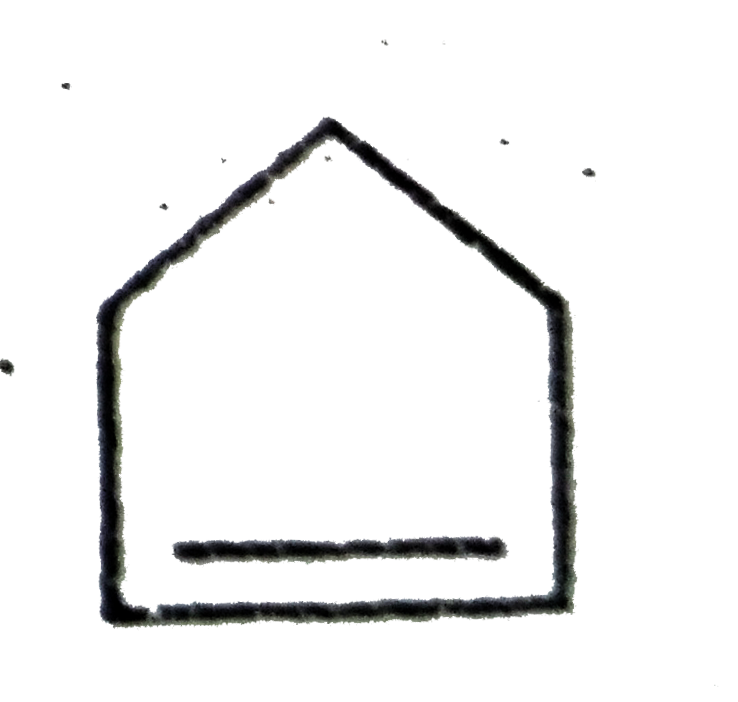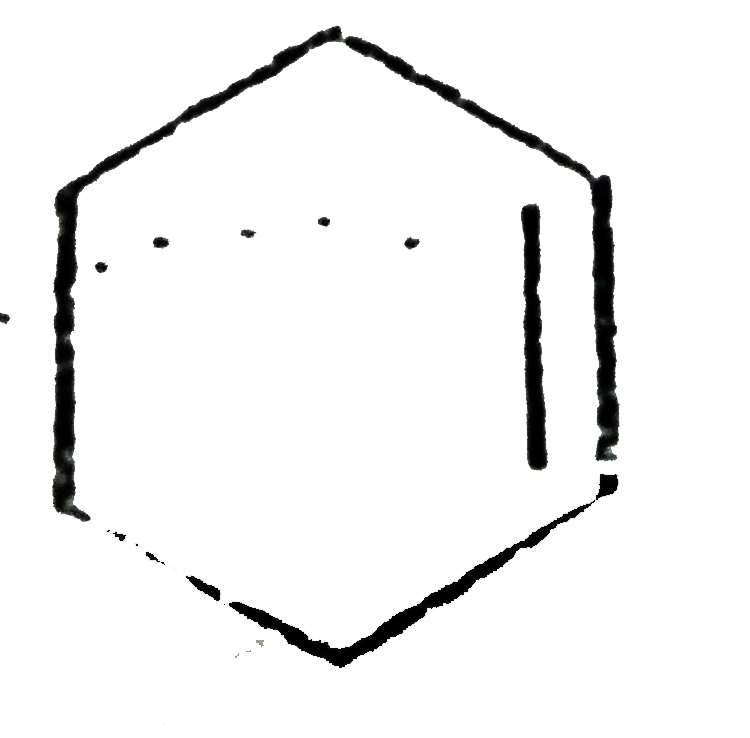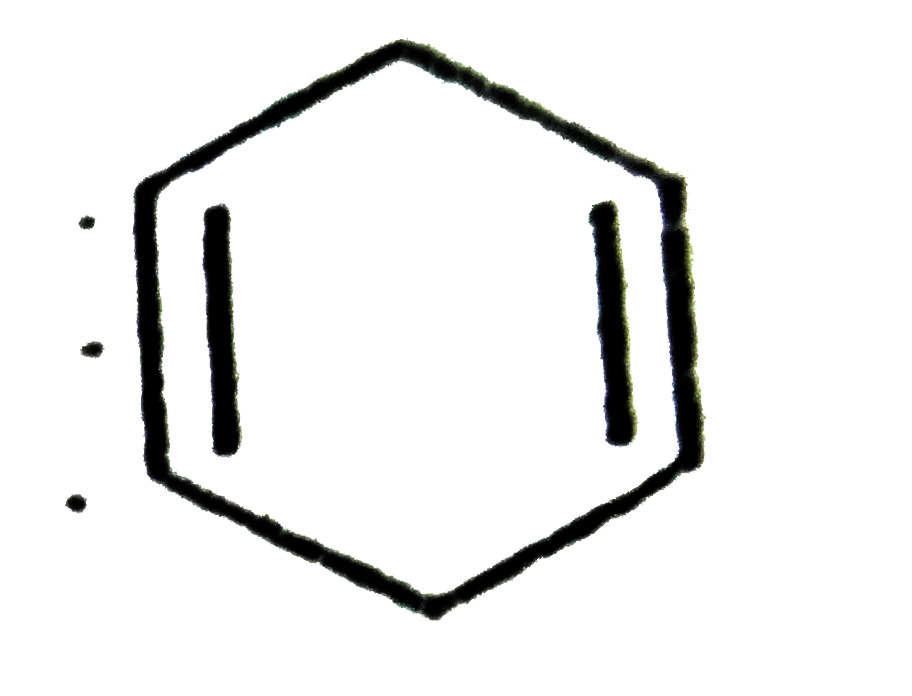Point out A in the given reaction sequence
AO3/H2O2−−−−−→BΔ−−→2CH3COOH+CO2




The correct Answer is:C
To determine compound A in the given reaction sequence, we will analyze the reactions step by step.
Step 1: Understanding the Reaction Sequence
The reaction sequence given is:
AO3/H2O2→BΔ→2CH3COOH+CO2
Here, A reacts with ozone (O3) and hydrogen peroxide (H2O2) to form B, and upon heating (Δ), B decomposes to yield two molecules of acetic acid (CH3COOH) and carbon dioxide (CO2).
Step 2: Identifying the Type of Reaction
The reaction involving ozone and hydrogen peroxide suggests that we are dealing with oxidative ozonolysis, which typically occurs with alkenes. This process involves the cleavage of double bonds in alkenes to form carbonyl compounds.
Step 3: Analyzing Possible Structures for A
We need to identify an alkene (compound A) that, when subjected to oxidative ozonolysis, will yield compound B.
1. Cyclopentene: If we consider cyclopentene, ozonolysis would yield a product that, upon heating, would not produce two acetic acid molecules. Instead, it would yield butanoic acid and carbon dioxide.
2. Cyclohexene: Similarly, cyclohexene would yield pentanoic acid upon heating, which also does not match our requirement of producing two acetic acid molecules.
3. Cyclohexadiene: This compound has two double bonds. Upon ozonolysis, both double bonds would cleave, producing two molecules of acetic acid (CH3COOH) after the removal of carbon dioxide. This matches our requirement perfectly.
4. Cyclobutadiene: This compound would yield oxalic acid, which does not lead to the formation of acetic acid upon heating.
Conclusion
After analyzing the possible structures for A, we conclude that the correct answer is:
A = Cyclohexadiene
The reaction sequence given is:
AO3/H2O2→BΔ→2CH3COOH+CO2
The reaction involving ozone and hydrogen peroxide suggests that we are dealing with oxidative ozonolysis, which typically occurs with alkenes. This process involves the cleavage of double bonds in alkenes to form carbonyl compounds.
We need to identify an alkene (compound A) that, when subjected to oxidative ozonolysis, will yield compound B.
2. Cyclohexene: Similarly, cyclohexene would yield pentanoic acid upon heating, which also does not match our requirement of producing two acetic acid molecules.
After analyzing the possible structures for A, we conclude that the correct answer is:
A = Cyclohexadiene
Topper's Solved these Questions
- HYDROCARBONSBOOK - AAKASH INSTITUTE ENGLISHCHAPTER - HYDROCARBONSEXERCISE - SECTION-C OBJECTIVE TYPE QUESTIONS (MORE THAN ONE OPTIONS ARE CORRECT)
12 Videos
- HYDROCARBONSBOOK - AAKASH INSTITUTE ENGLISHCHAPTER - HYDROCARBONSEXERCISE - SECTION-D LINKED COMPREHENSION TYPE QUESTIONS
7 Videos
- HYDROCARBONSBOOK - AAKASH INSTITUTE ENGLISHCHAPTER - HYDROCARBONSEXERCISE - ASSIGNMENT SECTION-A COMPETITION LEVEL DIFFER BY
50 Videos
- HALOALKANES AND HALOARENES BOOK - AAKASH INSTITUTE ENGLISHCHAPTER - HALOALKANES AND HALOARENES EXERCISE - ASSIGNMENT SECTION -D
15 Videos
- HYDROGENBOOK - AAKASH INSTITUTE ENGLISHCHAPTER - HYDROGENEXERCISE - ASSIGNMENT (SECTION - D) (Assertion-Reason Type question)
15 Videos
Similar Questions
Knowledge Check
Identify product D in the following reaction sequence :
CH_(3)-overset(CH_(3))overset(|)underset(CH_(3))underset(|)(C )-CH_(2)CH_(2)Ohoverset(K_(2)Cr_(7)O_(7),H_(2)SO_(4))underset(H_(2)O, "heat")(to)Aoverset(SOCl_(2))(to)Boverset((CH_(3))_2)NH)underset((2"mole"))(to)Coverset(1.LiAlH_(4))overset("diethyl ether")underset(2.H_(2)O)(to)DACH3CH3∣C∣CH3CH2C≡NBCH3CH3∣C∣CH3CH2N(CH3)2CCH3CH3∣C∣CH3CH2N(CH3)2∣CHN(CH3)2DCH3CH3∣C∣CH3CH2C∣OHHN(CH3)2
The reaction is :
CH3CHBr−CH2Br+2KOH(alc.)Δ−−→CH3−C≡CH+2KBr+2H2O
View SolutionThe missing structures A and B in the reaction sequence :
CH3−CH=CH2B2H6−−→AH2O2+NaOH−−−−−−−−→B are given by the set :
View SolutionThe major product (Y)in the following reaction sequency is :
CH3−CH3∣CH−CH=CH2Br2/H2O−−−−−→Xconc.H2SO4/Δ−−−−−−−−−→Y
View SolutionFind the last product [D] in reaction sequence
C6H5CHO+CH3−O∣∣C−CH2−COOC2H5 H3O+−−−→AΔ−−→CNH2−NH2−−−−−−→OH−/ΔD
View SolutionIn the reaction sequence
C6H5CHONH2OH/H⊕−−−−−−−−→Δ(X)P2O5/Δ−−−−−→(Y)H2O,H+−−−−−→(Z)
(X), (Y) and (Z) respectively be
View SolutionThe missing structures A and B in the recation sequence:
R−CH2−CH2OHAI(2)O3−−−−−→350∘CR−CH=CH2(i)O3−−−−−−−→(ii)Zn/H3O
RCHO+A,RCHOReduct−−−→B, are
View SolutionIn the reaction sequence Cyclohexane
hv/Cl2−−−→(A)alk.KOH/Δ−−−−−−−−→(B)(i)O3−−−−−−−−−→(ii)Zn/H2O. 'C' will be
View Solution
